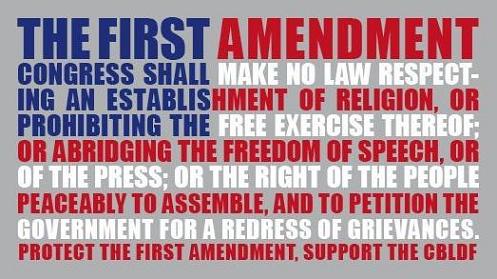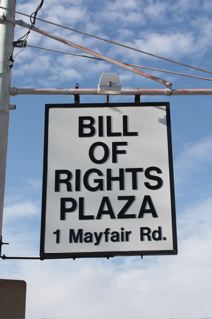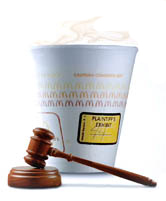 Yesterday, the United States Supreme Court put the final nail in the coffin of New York’s “new” attorney disciplinary rules regarding advertising when it refused to review a Second Circuit decision that struck most of the rules. I put “new” in quotes because they actually date to February 1, 2007, just months after I opened this little blog.
Yesterday, the United States Supreme Court put the final nail in the coffin of New York’s “new” attorney disciplinary rules regarding advertising when it refused to review a Second Circuit decision that struck most of the rules. I put “new” in quotes because they actually date to February 1, 2007, just months after I opened this little blog.
And I’ve been following the issue ever since. See January, 5, 2007; New Attorney Advertising Rules (Is This Blog an Advertisement?)
Most of the rules were first struck down by the U.S. District Court in July 2007 when challenged by Public Citizen on behalf of the upstate firm of Alexander & Catalano. And the Second Circuit upheld those determinations in April of this year. (Sonia Sotomayor was on the panel that heard the case, but had gone to the Supreme Court by the time the decision came down.)
Those broad-based rules tried to stop a variety of advertising techniques, but did so in a fashion that ran headlong into the First Amendment. The rules had barred, among other things, testimonials from clients relating to pending matters, portrayals of judges or fictitious law firms, attention-getting techniques unrelated to attorney competence, and trade names or nicknames that imply an ability to get results.
As I pointed out in one of my first posts, simply putting a picture of yourself on a lawfirm website could be construed as violating the prohibition against “characteristics clearly unrelated to legal competence.” The picture will tell the potential client your age, your race and your sex, but what will it tell them about legal competence? Nada. Ergo, under the new rules the photo could be a violation.
Obviously, this wasn’t why the rules were crafted. They came in response to the embarrassing aftermath of the October 2003 Staten Island Ferry disaster that killed 11, and the onslaught of ads in the Staten Island Advance the next day. Those ads were placed while rescue efforts were still ongoing at the ferry that day. It was not one of the better moments of the personal injury bar. And that incident brought about New York’s 30 day anti-solicitation rule, part of the new set of rules but one which was not affected by this ruling.
But the new rules went after problems that didn’t just have to do with 30 day time limits.
Senior Judge Frederick J. Scullin, who wrote the District Court opinion striking down almost all the other rules, summed up the problem this way in a buried footnote on page 29 of his decision:
Without question there has been a proliferation of tasteless, and at times obnoxious, methods of attorney advertising in recent years. New technology and an increase in the types of media available for advertising have exacerbated this problem and made it more ubiquitous. As a result, among other things, the public perception of he legal profession has been greatly diminished.
But in re-crafting rules in an attempt to solve this problem, the crafters went way too far. So far, in fact, that the only way to defend them was to assert that attorneys couldn’t use humor.
For it was humor that formed part of the basis of the state’s response to the Alexander & Catalano lawsuit. AS described the by state in one of its filings, the firm advertised that it:
retained by aliens, have the ability to leap tall buildings in a single bound, or have stomped around downtown Syracuse, Godzilla-style.
And the argument by the state against this? That it wasn’t truthful. See: New York Responds to Lawsuit Challenging New Attorney Advertising Rules — By Banning Humor
When I read the state’s brief, that I discussed at some length in that post, I knew the rules were toast.
While the ads may have been tasteless and embarrassing to the profession, no person with a functioning brain could have believed that the firm had actually been retained by aliens or done any of the other eye-catching things in those commercials.
And so the First Amendment ruled the day, as the rules over reached to ban more than just dishonesty.
Now I sure as hell wouldn’t want to pick a jury in any courtroom if my firm was busy running such moronic ads, but taste is not something that can be regulated.
———————-
See also on the Supreme Court’s action:
SCOTUS Gives Nod to 2nd Circuit OK of ‘Heavy Hitters’ Law Firm Slogan & Descriptive Trade Names (ABA Journal)
US Supreme Court to New York Lawyers: You Are Awesome (Tannebaum @ My Law License)
Supreme Court Denies Certiorari in Lawyer Advertising Case (Robson @ Constitutional Law Prof Blog)
Good News for ‘Heavy Hitters’: High Court Sidesteps Lawyer Advertising Dispute (Koppel @ WSJ Law Blog)
 Since today is Bill of Rights Day, I thought I would re-direct you to a post of mine from 2008 on the subject: The Bill of Rights and John Peter Zenger.
Since today is Bill of Rights Day, I thought I would re-direct you to a post of mine from 2008 on the subject: The Bill of Rights and John Peter Zenger.
